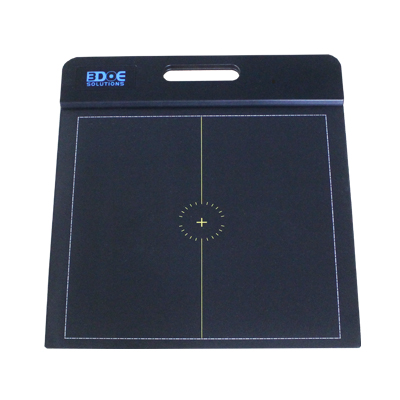
Tel :0755-86131192 86180201
Fax :0755-86180213
E-mail: info@3doe.com
Website: www.3doe.com
Address: 3A05, Minzhi Chamber of Commerce Building, Minzhi Avenue, Longhua District, Shenzhen
Are you here: Home > News > Industry NewsIndustry News
Flat feet are no longer a challenge—foot pressure systems assist, and corrective insoles restore your healthy arches!
Time:2025-01-22 16:03:35Source:深圳市精易迅科技有限公司Views:404
Flat Feet Are No Longer a Challenge: Foot Pressure Systems and Corrective Insoles Restore Healthy Arches
Flat feet, a common structural abnormality of the foot, refer to the reduced or complete loss of the arch, causing the sole of the foot to rest entirely on the ground. This condition not only affects walking comfort but can also lead to foot pain, gait abnormalities, and even joint problems. However, with the combined application of foot pressure analysis technology and corrective insoles, the diagnosis and correction of flat feet have entered a new phase of scientific precision, providing patients with reliable solutions to restore healthy arches.

Causes and Risks of Flat Feet
Flat feet can be categorized into congenital and acquired types. Congenital flat feet are associated with genetic factors, while acquired flat feet may arise from:
- Tendon Dysfunction: Weakening of major tendons supporting the arch, such as the posterior tibial tendon, can lead to arch collapse.
- Joint Ligament Laxity: Loose foot ligaments reduce the structural support for the arch.
- Excessive Weight: Increased body weight places extra pressure on the soles, gradually causing arch flattening.
- Poor Lifestyle Habits: Wearing improper footwear or prolonged standing can contribute to the condition.
If left untreated, flat feet can result in:
- Localized Pain: Discomfort in the soles and ankles is a common symptom.
- Gait Abnormalities: Flat feet may cause overpronation or supination, making walking or physical activities uncomfortable.
- Joint Damage: The lack of arch function increases stress on the knees and hips, potentially leading to arthritis or chronic injuries.
Foot Pressure Systems: A Scientific Tool for Evaluating Flat Feet
The foot pressure analysis system is an advanced diagnostic tool that uses high-precision sensors to capture the distribution of pressure between the foot and the ground, dynamically evaluating arch conditions. Its key functions in flat feet correction include:
- Static Analysis: Measures pressure distribution while standing, assessing arch support and identifying abnormal areas.
- Dynamic Gait Monitoring: Tracks changes in pressure and weight transfer during walking, highlighting gait abnormalities.
- Personalized Data Support: Provides precise parameters for designing corrective insoles tailored to individual needs.
Corrective Insoles: The Core Tool for Restoring Healthy Arches
Corrective insoles are biomechanically engineered aids that optimize foot mechanics to help restore and maintain normal arch function. Their key roles in flat feet correction include:
- Arch Support: Specially designed structures in the insoles help sustain the arch, reducing pressure on the soles.
- Even Pressure Distribution: Optimized pressure allocation alleviates pain caused by pressure concentration.
- Gait Adjustment: Insoles with customized shapes and materials correct overpronation or supination, improving walking stability.
- Shock Absorption: Cushioning materials in the insoles absorb impact forces during walking or running, protecting soft tissues and joints.
Advantages of Combining Foot Pressure Systems with Corrective Insoles
The integration of foot pressure systems and corrective insoles provides comprehensive support for scientifically correcting flat feet. The benefits include:
- Precision Intervention: Detailed data from the pressure system ensures a highly personalized insole design for maximum effectiveness.
- Dynamic Monitoring: Regular assessment of changes in foot pressure distribution allows for timely adjustments to the insoles, enhancing long-term outcomes.
- Improved Overall Health: Beyond restoring arch function, this approach can reduce stress on the knees, hips, and spine, improving overall quality of life.
Usage Guidelines and Precautions
While the combined application of foot pressure systems and corrective insoles is highly effective, patients should consider the following:
- Professional Guidance: Diagnosis and insole design should be conducted under the supervision of a podiatrist or orthotist to ensure scientific accuracy.
- Gradual Adaptation: When using corrective insoles for the first time, gradually increase wear time to allow the feet to adjust to the new mechanical environment.
- Regular Follow-ups: Periodic evaluations using the pressure system are necessary to review the corrective effect and modify or replace insoles as needed.
Flat feet are no longer an insurmountable challenge. Through the scientific analysis provided by foot pressure systems and the personalized intervention offered by corrective insoles, patients can not only restore healthy arches but also address gait abnormalities, enhancing walking comfort and stability. This combination of technology and practice provides a new pathway for managing foot health, ensuring every step is steadier and more comfortable.




